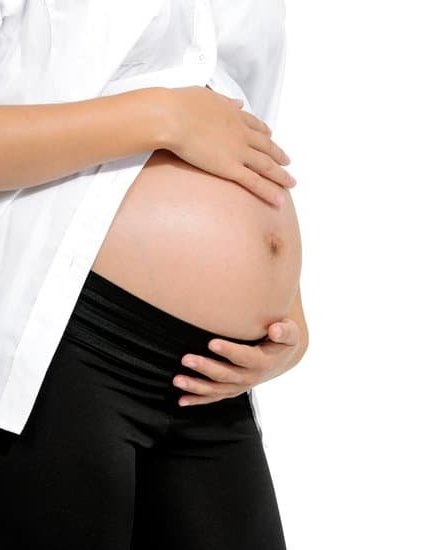When should swelling during pregnancy be a concern? Swelling, also known as edema, is a common occurrence for many pregnant women. It is often considered a normal part of pregnancy, but there are times when it may be a cause for concern. Understanding the difference between normal and excessive swelling is important for the health and well-being of both the mother and the baby.
During pregnancy, the body goes through various changes, including hormonal shifts and an increase in blood volume. These changes can lead to swelling in the feet, ankles, and hands. While mild swelling is expected, it’s crucial to know when it becomes excessive and potentially problematic.
In this article, we will explore the causes of swelling during pregnancy, when to expect it during different trimesters, how to differentiate between normal and excessive swelling, potential complications such as pre-eclampsia and gestational hypertension, as well as tips for managing swelling through diet, exercise, and elevation. Additionally, we will discuss when it’s necessary to seek medical attention for concerning symptoms related to swelling.
Ultimately, our goal is to help expectant mothers navigate this aspect of pregnancy while prioritizing their health and well-being.
Causes of Swelling During Pregnancy
During pregnancy, it is common for women to experience swelling, particularly in the lower extremities. This occurs due to a combination of hormonal changes and increased blood volume. Understanding the causes of swelling during pregnancy can help expectant mothers manage their symptoms and distinguish between normal swelling and excessive swelling.
Hormonal Changes
One of the primary causes of swelling during pregnancy is hormonal changes. The body produces a hormone called relaxin, which helps to relax the ligaments in the pelvic area in preparation for childbirth. However, this hormone can also cause the blood vessels to dilate, leading to an increase in fluid retention and swelling.
Furthermore, the body also retains more sodium during pregnancy, which contributes to water retention and subsequent swelling. These hormonal changes are a natural part of pregnancy and can cause noticeable swelling, especially in the feet, ankles, and hands.
Increased Blood Volume
Another significant cause of swelling during pregnancy is the increase in blood volume that occurs to support both the mother and the growing fetus. As the body produces more blood to supply nutrients and oxygen to the developing baby, it can result in fluid accumulation in tissues throughout the body. This excess fluid can lead to noticeable swelling in various parts of the body.
Understanding these causes can help expectant mothers recognize that some level of swelling is expected during pregnancy. However, it is important for pregnant women to be able to identify when should swelling during pregnancy be a concern and seek medical attention if necessary.
When to Expect Swelling
During pregnancy, it is common for women to experience swelling due to hormonal changes and increased blood volume. However, the timing of when swelling occurs can vary depending on the individual and the stage of pregnancy. It is important to understand the differences in swelling during the first trimester compared to the third trimester.
First Trimester: Establishing Changes
During the first trimester of pregnancy, many women may not notice significant swelling. This is because the body is still adjusting to the hormonal changes and increased blood volume that occurs during this time. Some women may experience mild bloating or puffiness in their hands or feet, but it is generally not excessive at this stage.
Third Trimester: Increased Pressure
As pregnancy progresses into the third trimester, it is common for women to experience more noticeable swelling, particularly in the lower extremities. This is due to increased pressure on blood vessels and fluid retention as the uterus grows larger. Swelling in the ankles, feet, and legs can become more pronounced during this stage of pregnancy.
It is important for expecting mothers to be aware of these differences in swelling throughout their pregnancy. While some degree of swelling is normal, understanding when to expect it can help women distinguish between typical discomfort and potentially concerning symptoms that warrant medical attention.
Identifying Normal vs Excessive Swelling
During pregnancy, it is common for women to experience some swelling in their feet, ankles, and hands. This is due to the body’s increased blood volume and hormonal changes that can lead to the retention of fluids. However, it is important for expectant mothers to be able to distinguish between normal swelling and excessive swelling that may indicate a more serious issue.
Signs of normal swelling during pregnancy include mild puffiness in the feet and ankles, which tends to worsen as the day goes on but improves after resting with your legs elevated. Additionally, slight swelling in the hands can also be considered normal. It is important for pregnant women to pay attention to these signs and not dismiss them entirely.
On the other hand, excessive or abnormal swelling can be identified by certain warning signs such as sudden or severe swelling in the face, hands, or feet, rapid weight gain over a short period of time (more than 4 pounds in a week), severe headaches, vision changes or abdominal pain. These symptoms may be indicative of a more serious condition such as pre-eclampsia or gestational hypertension and should not be ignored.
If you are experiencing any of these symptoms or are uncertain about the severity of your swelling during pregnancy, it is important proactive measures immediately seek medical attention from your healthcare provider. Prompt intervention can help prevent potential complications and ensure both maternal and fetal health are prioritized throughout the pregnancy journey.
Potential Complications
Swelling during pregnancy, also known as edema, is a common occurrence due to hormone changes and increased blood volume. However, it is essential for pregnant women to be aware of when swelling during pregnancy should be a concern.
One potential complication that can arise from excessive swelling is pre-eclampsia, a condition characterized by high blood pressure and damage to other organ systems, typically occurring after the 20th week of pregnancy. Another potential complication is gestational hypertension, which is high blood pressure that develops after the 20th week of pregnancy but usually goes away after childbirth.
Some signs and symptoms of pre-eclampsia or gestational hypertension include severe headaches, vision changes such as seeing spots or flashes of light, upper abdominal pain, nausea or vomiting, decreased urine output, shortness of breath, and swelling in the hands and face. If you experience any of these symptoms, it is important to seek medical attention promptly.
To better understand the potential complications related to swelling during pregnancy, here are some key points to consider:
- Pre-Eclampsia: Characterized by high blood pressure and possible damage to other organs
- Gestational Hypertension: High blood pressure that typically resolves after childbirth
- Signs and Symptoms: Severe headaches, vision changes, upper abdominal pain, nausea or vomiting
- When to Seek Medical Attention: Any concerning symptoms should prompt immediate medical evaluation
It is crucial for pregnant women to monitor their swelling and be mindful of any warning signs that may indicate a more serious issue. Maternal health should always be prioritized during pregnancy to ensure the well-being of both the mother and the baby.
Tips for Managing Swelling
During pregnancy, swelling is a common symptom due to the body’s increased blood volume and hormonal changes. While some level of swelling is normal, excessive or sudden swelling can be a cause for concern. To manage and reduce swelling during pregnancy, there are several strategies that expectant mothers can incorporate into their daily routines.
One effective way to manage swelling during pregnancy is by maintaining a healthy diet. Consuming foods that are low in sodium and high in potassium, such as bananas and sweet potatoes, can help regulate fluid balance in the body and reduce water retention. Additionally, staying hydrated by drinking plenty of water can also aid in reducing swelling.
Incorporating light exercise into a daily routine can also help alleviate swelling. Activities such as walking, swimming, and prenatal yoga can improve circulation and prevent fluid accumulation in the legs and feet. It is important for expectant mothers to consult with their healthcare provider before starting or changing an exercise regimen during pregnancy.
Another helpful tip for managing swelling is elevation. Keeping the legs elevated while resting or sleeping can assist in reducing fluid build-up in the lower extremities. Using cushions or pillows to elevate the legs above heart level for short periods throughout the day can provide relief from swelling.
| Managing Swelling | Recommendation |
|---|---|
| Diet | Consume foods low in sodium and high in potassium |
| Exercise | Incorporate light physical activity such as walking or swimming |
| Elevation | Keep the legs elevated above heart level while resting or sleeping |
When to Seek Medical Attention
During pregnancy, some degree of swelling is expected due to hormonal changes and increased blood volume. However, there are certain times when swelling during pregnancy should be a cause for concern. It is important for expectant mothers to be aware of the red flags and warning signs that indicate when the swelling may be excessive and potentially problematic.
One of the key red flags to look out for is sudden or severe swelling, particularly in the hands, face, or feet. This could be a sign of a condition called pre-eclampsia, which is characterized by high blood pressure and protein in the urine. Pre-eclampsia can be dangerous for both the mother and the baby if left untreated, so it is crucial to seek medical attention if any sudden or severe swelling occurs.
Another warning sign to watch for is swelling that is accompanied by other symptoms such as headaches, visual disturbances, abdominal pain, nausea, or vomiting. These symptoms could indicate complications such as gestational hypertension or pre-eclampsia. In these cases, it is important to consult with a healthcare provider promptly to ensure proper monitoring and management of the condition.
Furthermore, if there is noticeable asymmetry in swelling between the left and right sides of the body, particularly in one leg over the other or one hand over the other, this could be indicative of a blood clot known as deep vein thrombosis (DVT). DVT can be a serious condition requiring immediate medical attention. Therefore, any noticeable differences in swelling between extremities should not be ignored.
| Red Flags | Warning Signs |
|---|---|
| Sudden or severe swelling in hands, face, or feet | Headaches, visual disturbances |
| Symmetrical differences in swelling between extremities | Abdominal pain, nausea/vomiting |
Conclusion
In conclusion, it is important for pregnant women to remain vigilant about the swelling they may experience during pregnancy. While mild swelling is a normal and expected occurrence due to hormonal changes and increased blood volume, excessive or sudden swelling should not be overlooked. It is crucial to differentiate between normal and abnormal swelling, as certain conditions such as pre-eclampsia and gestational hypertension can pose serious risks to both mother and baby.
Pregnant women should pay close attention to any unusual symptoms such as sudden or severe swelling, headaches, vision changes, or abdominal pain. These may be red flags indicating a potential complication that requires immediate medical attention. By staying informed and seeking prompt medical assistance when necessary, expectant mothers can prioritize their health and ensure the best possible outcome for their pregnancy.
In addition to staying aware of warning signs, pregnant women should also focus on implementing strategies to manage swelling such as maintaining a balanced diet, engaging in regular exercise, and elevating the legs when possible. By taking proactive measures and closely monitoring any changes in their condition, expectant mothers can better safeguard their well-being throughout the course of their pregnancy. Ultimately, prioritizing maternal health is essential for a successful pregnancy journey.
Frequently Asked Questions
When Should I Go to the Hospital for Swelling During Pregnancy?
Swelling during pregnancy is common, especially in the later stages. However, if you notice sudden or severe swelling in your hands, feet, or face, it’s important to contact your healthcare provider. This could be a sign of preeclampsia, a serious condition that requires medical attention.
How Do I Know if My Swelling Is Normal or Preeclampsia?
It can be challenging to distinguish between normal pregnancy swelling and preeclampsia. Preeclampsia is characterized by high blood pressure and protein in the urine, in addition to swelling. If you experience sudden swelling along with headaches, vision changes, or upper abdominal pain, seek medical advice immediately.
How Do You Know if Swelling Is Serious?
Serious swelling during pregnancy may be indicated by symptoms such as sudden or extreme swelling in the hands and face, difficulty breathing, chest pain, severe headaches, and vision changes. If you experience any of these symptoms, it’s crucial to contact your healthcare provider right away for an evaluation.

Welcome to my fertility blog. This is a space where I will be sharing my experiences as I navigate through the world of fertility treatments, as well as provide information and resources about fertility and pregnancy.





